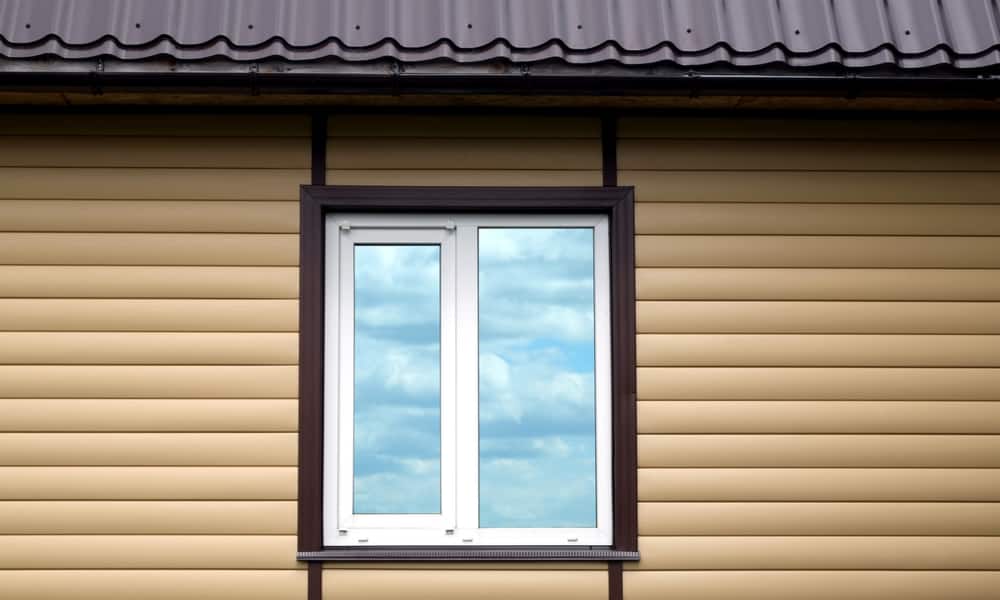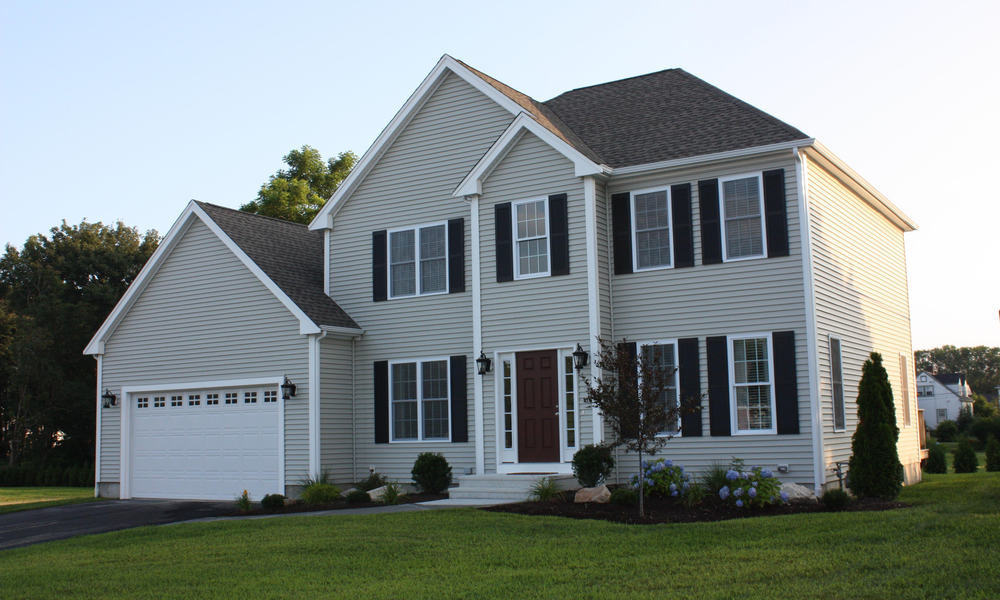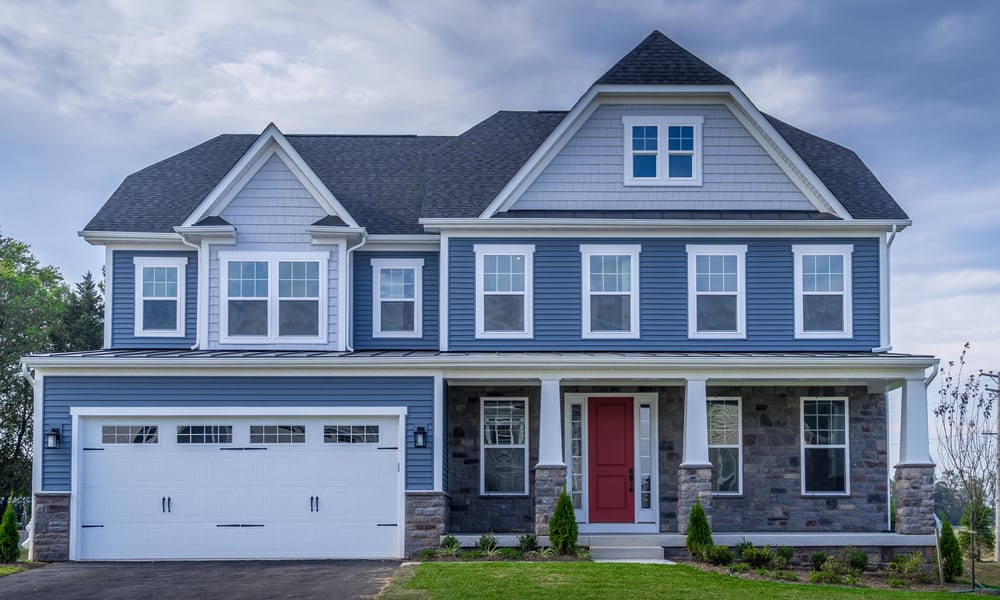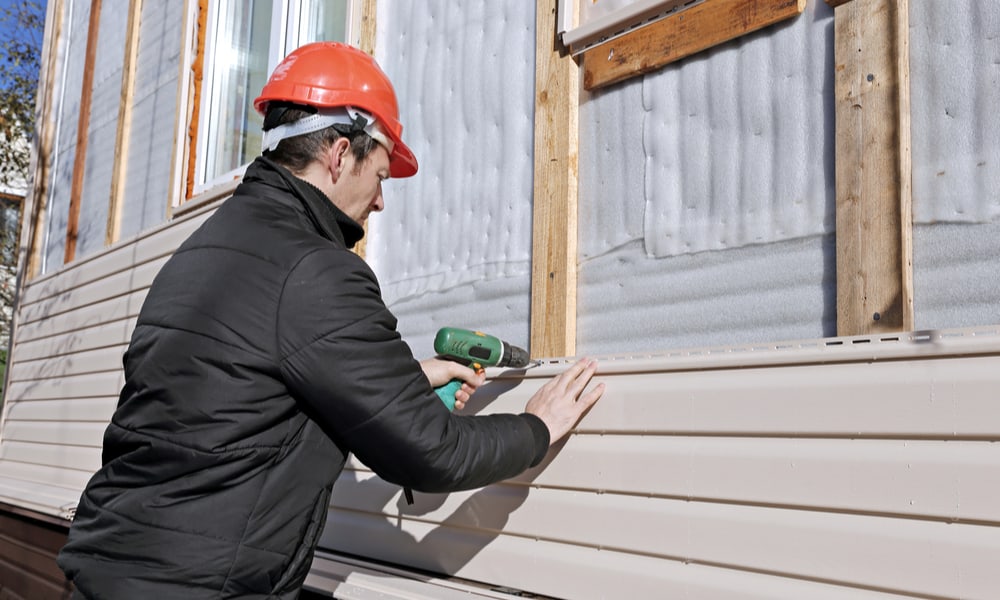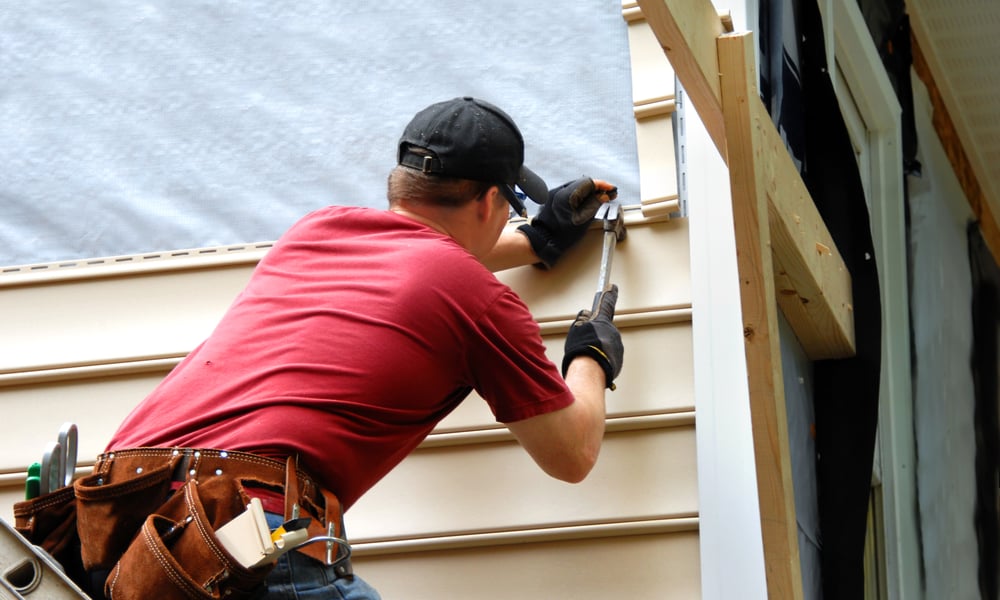Few house remodeling projects have the same impact as those that involve the outside of your home. The façade is the first thing your guests will notice – and the only thing passerby and neighbors might see. Choosing the right siding is crucial, and you may wonder which to choose between polymer siding vs. vinyl siding.
Vinyl has been around for decades. This material is cheap and adaptable. It also lasts for quite some time. Polymer is a newer material in the siding world. Polymer is also a type of plastic and is similar to vinyl in many ways. It is not as readily available, but it is more resistant. So, which to pick? Let’s find it out.
Table of Contents
What Is Polymer Siding
Polymer is a name often used in the plastic industry, often as a synonym for plastic or resin. However, there are a variety of natural and artificial polymers out there, all of them characterized by a structure consisting of large molecules bonded together in long, repeating chains.
Due to their unique structure, polymers are known for their excellent resilience and durability – rubber, for instance, is one of the most popular natural polymers.
Polymer siding is made of polypropylene resin, a type of artificial polymer produced in a way similar to vinyl. Like vinyl thus, polymer siding is a type of plastic, but it is more resistant to impact and elements compared to vinyl.
Polymer siding is rather new, more expensive, and harder to find. That said, you may prefer it if you live in an area with an extreme climate.
Polymer Siding Advantages
- Better aesthetics: While polymer siding isn’t offered in as many finishes as vinyl siding, the grain texture is more similar to that of natural wood. The surface isn’t as glossy either, so the panels will never give off a cheap, plastic feel.
- Thicker than vinyl: Most polymer panels are twice as thick as vinyl panels. Not only are they more resistant, but they have higher energy efficiency.
- No more seams: If you’ve ever installed vinyl siding, you know that the only way to install it properly is by lapping the panels every 12 feet. This installation method increases the siding’s durability, but it also creates a vertical seam that can be quite an eye-sore. Polymer siding doesn’t require you to overlap the panels, however, making it a better choice for improved aesthetics.
- Stronger than vinyl: When comparing panels of the same thickness, polymer is stronger than vinyl, thanks to its unique molecule structure.
- More environmentally friendly: Throughout its life cycle, polymer is more environmentally friendly than vinyl and other plastic products.
What Is Vinyl Siding
Vinyl siding is siding made of polyvinyl chloride (PVC). While PVC is also essentially a plastic polymer, it has a different structure compared to polypropylene resin. The material is designed to remain stiff while still retaining flexibility.
This flexibility is essential for the manufacture of vinyl siding, but the additives used during the manufacturing process are harmful to the environment. Despite not being as sustainable as polymer siding, vinyl siding is still recyclable.
Another great advantage is its low maintenance. The material will never peel or rot and is relatively cheap, making it a popular choice for house siding.
Vinyl Siding Advantages
- Cheaper than polymer: Vinyl siding has been manufactured for decades, and the streamlined process allows manufacturers to keep costs low. Lower production costs mean a lower price, so you won’t have to break the bank.
- More style options: Vinyl siding comes in more styles and color options compared to any other siding type, including polymer.
- Minimal maintenance: Vinyl siding is very easy to maintain. As long as you clean it regularly, all you’ll need is a soft brush and garden hose to wash off dirt and grime. A pressure washer is rarely employed unless there is a lot of dirt caked on the surface.
Siding Options Pros & Cons
Polymer Siding vs. Vinyl Siding: Head-to-Head Comparison
1. Appearance
Both polymer and vinyl siding will increase the curb appeal of your house, but polymer siding has a more refined look.
It all comes down to thickness. Polymer siding is generally thicker than vinyl, meaning that manufacturers can create deeper wood grain lines. Thanks to this, the siding looks more like natural wood, often competing with engineered wood options like LP SmartSide.
Vinyl siding has a slightly shinier finish, looking more like plastic. However, vinyl is available in smooth texture – a more suitable choice for modern homes.
2. Durability
Plastic is generally a resilient and durable material, but the polymer’s thickness wins once again. Polymer siding is more durable than vinyl, generally lasting for about 60 years. With proper maintenance, vinyl siding can reach a lifespan of around 40 years, but exposure to elements will cause the material to become brittle sooner or later.
Another thing to keep in mind is that colors tend to fade faster on vinyl. Although you can treat the surface with anti-fade coating, this means constant maintenance.
3. Installation
Polymer and vinyl siding have similarly constructed panels that are easy to install. Both options are an excellent choice for DIY installation, or you could hire a professional.
4. Maintenance
Both polymer and vinyl are plastic materials that require low maintenance. More often than not, yearly washing is all it takes to keep your home’s exterior pristine.
The materials can grow mold and mildew in damp, shaded areas. However, the microorganisms can’t infiltrate unless there are cracks or holes in the panel. Using a cleaner or bleach solution is all it takes to get rid of them.
No matter what material you opt for, you should also perform a checkup at least once a year, inspecting for cracks and holes. If present, repair the panel as soon as possible to prevent moisture leaks.
5. Energy Efficiency
Polymer siding is more energy-efficient than vinyl siding, helping you reduce your utility bills. However, this is only true if you’re opting for standard, hollow vinyl siding. Insulated vinyl siding adds more R-value to your home compared to polymer. So, if you live in a cold climate area, insulated vinyl siding is the way to go.
6. Variety
If you like to have lots of options to choose from, vinyl siding is most likely right for you. Polymer siding is offered in four primary profiles, including traditional cedar, scalloped, cape cod, and hand-split. The color choice is also limited to traditional options like white and gray.
Vinyl siding comes in more profiles, several texture options, as well as an array of hues that suit traditional and modern homes alike.
7. Environmental Impact
Environmentally conscious homeowners should know that polymer siding is more environmentally friendly. Not only does it last longer, thus producing less waste, but the manufacturing process is cleaner. That said, both polymer and vinyl siding are 100% recyclable.
8. Costs
Polymer siding is a newer and rarer product; thus, it is more expensive than vinyl. In general, you can expect to pay between $2 and $7 per square foot, materials and installation included, for vinyl siding. Polymer siding costs between $3 and $15 per square foot, depending on the type of siding you want.
That said, vinyl siding has a shorter lifespan and is less resistant than polymer. Moreover, polymer has greater energy efficiency than hollow vinyl siding.
9. Resale Value
Polymer siding has a higher resale value, mainly due to its natural wood finish. However, the difference in price between the two could make vinyl a more appropriate choice if you want to sell your house. In fact, you can only expect to recoup about 80% of the value invested in either siding type, making vinyl a tad more appealing option.
Polymer Siding vs. Vinyl Siding: Which to Choose?
While polymer siding has a few advantages over vinyl, the differences are minimal, and the cost difference is sometimes hard to justify.
If you live in an area with harsh weather and strong winds, or if you want wood-like siding without maintenance, then polymer siding could be a perfect choice.
However, if you only want to freshen up the exterior walls but don’t feel like breaking the bank, vinyl siding still delivers the most advantages. In fact, you can choose from cheaper or premium vinyl panels, a range of textures and styles, and multiple colors.
Conclusion
When it comes to polymer siding vs. vinyl siding, the choice is down to you. Do you want the strongest plastic siding and don’t mind dropping some cash? Opt for polymer siding. It doesn’t come in as many styles and colors as vinyl, but it’s more durable, increases the energy efficiency of your home, and is more environmentally friendly.
Do you want a good-looking exterior but don’t feel like spending an arm and a leg? Vinyl siding brings almost all the advantages of polymer, is easy to install and maintain, and comes cheap.
So, which one will you choose? Tell us in a comment below. And if you found this article useful, don’t forget to share it with your friends.
